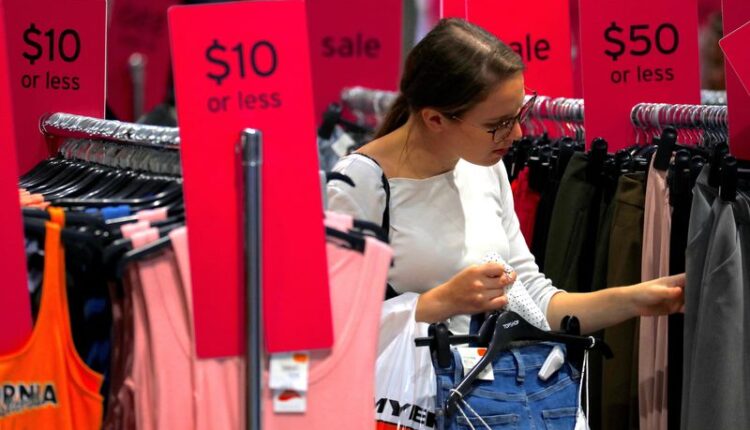Australia Dec retail spending nosedives in warning for economy
By Stella Qiu
SYDNEY (Reuters) – Australian retail sales recorded the biggest drop in more than two years in December, as rising borrowing costs and sky-high inflation finally sank spending, an economic shock that may lessen the need for much more policy tightening.
Retail sales fell 3.9% in December from November, after 11 months of consecutive gains, Australian Bureau of Statistics (ABS) data showed on Tuesday, suggesting that rate hikes so far are working as intended.
That also marked the biggest drop since August 2020 when parts of the country were under a lockdown due to the COVID-19 pandemic.
The outcome missed the median forecast of a drop of 0.3% by a large margin. November’s result, driven by Black Friday sales, was revised up to a rise of 1.7% from an originally reported gain of 1.4%.
“The large fall in December suggests that retail spending is slowing due to high cost-of-living pressures,” said Ben Dorber, ABS head of retail statistics.
“Retail businesses reported that many consumers had responded to these pressures by doing more Christmas shopping in November to take advantage of heavy promotional activity and discounting as part of the Black Friday sales event.”
Investors reacted by pushing the Aussie dollar lower to $0.7046, from $0.7060 before the data, while paring back the implied peak for the cash rates by the Reserve Bank of Australia to 3.7%, compared with 3.8% earlier.
Sales declined the most across discretionary goods including department stores, household goods retailing and fashion retailers. Sales at department stores plunged 14.3% from the previous month.
The slide wiped out gains made the previous two months and, combined with rising inflation, implied real sales also fell sharply over the fourth quarter and carved a chunk out of economic output.
Inflation is already running at a 32-year high of 7.8%, with a closely watched measure of core inflation, the trimmed mean, accelerating to 6.9%, well above the RBA’s own forecast of 6.5%.
“The RBA’s trade-off between taming inflation and maintaining some momentum in domestic demand is becoming more challenging,” said Sean Langcake, head of macroeconomic forecasting for BIS Oxford Economics.
“With the impact of the 2022 rate hikes yet to be fully realised, we still expect two more hikes to be delivered in the first quarter.”
Analysts at ANZ expect consumption growth to slow through 2023 as a result of higher interest rates and the recent decline in real wages due to strong inflation.
After the data, futures markets still priced in a hefty 85% chance the cash rate would be raised by a quarter-point next week to 3.35%.
The U.S. Federal Reserve is expected to raise rates 25 basis points on Wednesday, followed the day after by 50 basis point hikes from the Bank of England and European Central Bank.
An analysis by UBS on Tuesday projects a sharp slowing in spending by those who hold “extra” cash savings to a well-below trend pace from mid-2023.

